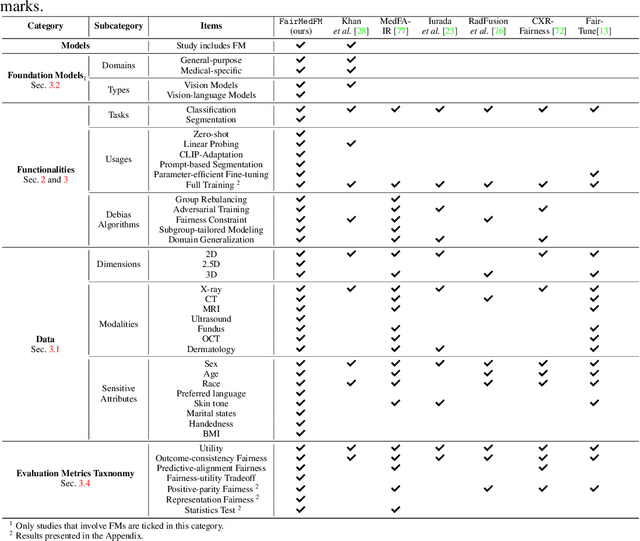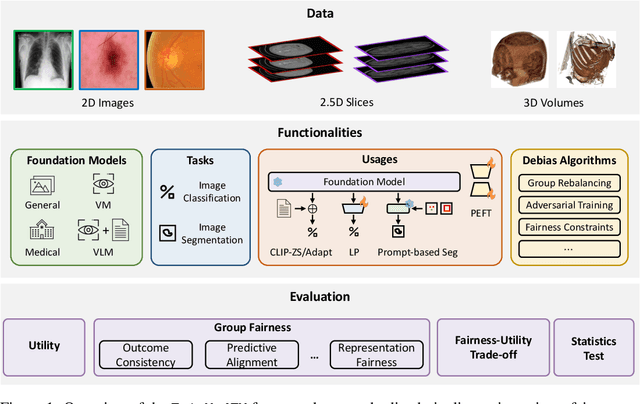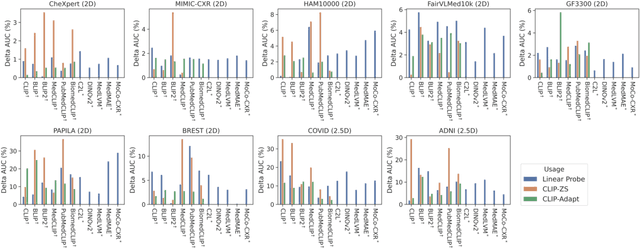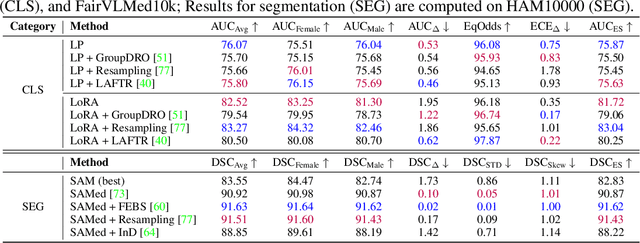Ruinan Jin
Stochastic Gradient Descent in Non-Convex Problems: Asymptotic Convergence with Relaxed Step-Size via Stopping Time Methods
Apr 17, 2025Abstract:Stochastic Gradient Descent (SGD) is widely used in machine learning research. Previous convergence analyses of SGD under the vanishing step-size setting typically require Robbins-Monro conditions. However, in practice, a wider variety of step-size schemes are frequently employed, yet existing convergence results remain limited and often rely on strong assumptions. This paper bridges this gap by introducing a novel analytical framework based on a stopping-time method, enabling asymptotic convergence analysis of SGD under more relaxed step-size conditions and weaker assumptions. In the non-convex setting, we prove the almost sure convergence of SGD iterates for step-sizes $ \{ \epsilon_t \}_{t \geq 1} $ satisfying $\sum_{t=1}^{+\infty} \epsilon_t = +\infty$ and $\sum_{t=1}^{+\infty} \epsilon_t^p < +\infty$ for some $p > 2$. Compared with previous studies, our analysis eliminates the global Lipschitz continuity assumption on the loss function and relaxes the boundedness requirements for higher-order moments of stochastic gradients. Building upon the almost sure convergence results, we further establish $L_2$ convergence. These significantly relaxed assumptions make our theoretical results more general, thereby enhancing their applicability in practical scenarios.
Interactive Tumor Progression Modeling via Sketch-Based Image Editing
Mar 10, 2025Abstract:Accurately visualizing and editing tumor progression in medical imaging is crucial for diagnosis, treatment planning, and clinical communication. To address the challenges of subjectivity and limited precision in existing methods, we propose SkEditTumor, a sketch-based diffusion model for controllable tumor progression editing. By leveraging sketches as structural priors, our method enables precise modifications of tumor regions while maintaining structural integrity and visual realism. We evaluate SkEditTumor on four public datasets - BraTS, LiTS, KiTS, and MSD-Pancreas - covering diverse organs and imaging modalities. Experimental results demonstrate that our method outperforms state-of-the-art baselines, achieving superior image fidelity and segmentation accuracy. Our contributions include a novel integration of sketches with diffusion models for medical image editing, fine-grained control over tumor progression visualization, and extensive validation across multiple datasets, setting a new benchmark in the field.
Can Textual Gradient Work in Federated Learning?
Feb 27, 2025Abstract:Recent studies highlight the promise of LLM-based prompt optimization, especially with TextGrad, which automates differentiation'' via texts and backpropagates textual feedback. This approach facilitates training in various real-world applications that do not support numerical gradient propagation or loss calculation. In this paper, we systematically explore the potential and challenges of incorporating textual gradient into Federated Learning (FL). Our contributions are fourfold. Firstly, we introduce a novel FL paradigm, Federated Textual Gradient (FedTextGrad), that allows clients to upload locally optimized prompts derived from textual gradients, while the server aggregates the received prompts. Unlike traditional FL frameworks, which are designed for numerical aggregation, FedTextGrad is specifically tailored for handling textual data, expanding the applicability of FL to a broader range of problems that lack well-defined numerical loss functions. Secondly, building on this design, we conduct extensive experiments to explore the feasibility of FedTextGrad. Our findings highlight the importance of properly tuning key factors (e.g., local steps) in FL training. Thirdly, we highlight a major challenge in FedTextGrad aggregation: retaining essential information from distributed prompt updates. Last but not least, in response to this issue, we improve the vanilla variant of FedTextGrad by providing actionable guidance to the LLM when summarizing client prompts by leveraging the Uniform Information Density principle. Through this principled study, we enable the adoption of textual gradients in FL for optimizing LLMs, identify important issues, and pinpoint future directions, thereby opening up a new research area that warrants further investigation.
A Comprehensive Framework for Analyzing the Convergence of Adam: Bridging the Gap with SGD
Oct 06, 2024
Abstract:Adaptive Moment Estimation (Adam) is a cornerstone optimization algorithm in deep learning, widely recognized for its flexibility with adaptive learning rates and efficiency in handling large-scale data. However, despite its practical success, the theoretical understanding of Adam's convergence has been constrained by stringent assumptions, such as almost surely bounded stochastic gradients or uniformly bounded gradients, which are more restrictive than those typically required for analyzing stochastic gradient descent (SGD). In this paper, we introduce a novel and comprehensive framework for analyzing the convergence properties of Adam. This framework offers a versatile approach to establishing Adam's convergence. Specifically, we prove that Adam achieves asymptotic (last iterate sense) convergence in both the almost sure sense and the \(L_1\) sense under the relaxed assumptions typically used for SGD, namely \(L\)-smoothness and the ABC inequality. Meanwhile, under the same assumptions, we show that Adam attains non-asymptotic sample complexity bounds similar to those of SGD.
Asymptotic and Non-Asymptotic Convergence Analysis of AdaGrad for Non-Convex Optimization via Novel Stopping Time-based Analysis
Sep 08, 2024
Abstract:Adaptive optimizers have emerged as powerful tools in deep learning, dynamically adjusting the learning rate based on iterative gradients. These adaptive methods have significantly succeeded in various deep learning tasks, outperforming stochastic gradient descent (SGD). However, although AdaGrad is a cornerstone adaptive optimizer, its theoretical analysis is inadequate in addressing asymptotic convergence and non-asymptotic convergence rates on non-convex optimization. This study aims to provide a comprehensive analysis and complete picture of AdaGrad. We first introduce a novel stopping time technique from probabilistic theory to establish stability for the norm version of AdaGrad under milder conditions. We further derive two forms of asymptotic convergence: almost sure and mean-square. Furthermore, we demonstrate the near-optimal non-asymptotic convergence rate measured by the average-squared gradients in expectation, which is rarely explored and stronger than the existing high-probability results, under the mild assumptions. The techniques developed in this work are potentially independent of interest for future research on other adaptive stochastic algorithms.
FairMedFM: Fairness Benchmarking for Medical Imaging Foundation Models
Jul 01, 2024



Abstract:The advent of foundation models (FMs) in healthcare offers unprecedented opportunities to enhance medical diagnostics through automated classification and segmentation tasks. However, these models also raise significant concerns about their fairness, especially when applied to diverse and underrepresented populations in healthcare applications. Currently, there is a lack of comprehensive benchmarks, standardized pipelines, and easily adaptable libraries to evaluate and understand the fairness performance of FMs in medical imaging, leading to considerable challenges in formulating and implementing solutions that ensure equitable outcomes across diverse patient populations. To fill this gap, we introduce FairMedFM, a fairness benchmark for FM research in medical imaging.FairMedFM integrates with 17 popular medical imaging datasets, encompassing different modalities, dimensionalities, and sensitive attributes. It explores 20 widely used FMs, with various usages such as zero-shot learning, linear probing, parameter-efficient fine-tuning, and prompting in various downstream tasks -- classification and segmentation. Our exhaustive analysis evaluates the fairness performance over different evaluation metrics from multiple perspectives, revealing the existence of bias, varied utility-fairness trade-offs on different FMs, consistent disparities on the same datasets regardless FMs, and limited effectiveness of existing unfairness mitigation methods. Checkout FairMedFM's project page and open-sourced codebase, which supports extendible functionalities and applications as well as inclusive for studies on FMs in medical imaging over the long term.
Universal Debiased Editing on Foundation Models for Fair Medical Image Classification
Mar 16, 2024



Abstract:In the era of Foundation Models' (FMs) rising prominence in AI, our study addresses the challenge of biases in medical images while using FM API, particularly spurious correlations between pixels and sensitive attributes. Traditional methods for bias mitigation face limitations due to the restricted access to web-hosted FMs and difficulties in addressing the underlying bias encoded within the FM API. We propose an U(niversal) D(ebiased) E(diting) strategy, termed UDE, which generates UDE noise to mask such spurious correlation. UDE is capable of mitigating bias both within the FM API embedding and the images themselves. Furthermore, UDE is suitable for both white-box and black-box FM APIs, where we introduced G(reedy) (Z)eroth-O(rder) (GeZO) optimization for it when the gradient is inaccessible in black-box APIs. Our whole pipeline enables fairness-aware image editing that can be applied across various medical contexts without requiring direct model manipulation or significant computational resources. Our empirical results demonstrate the method's effectiveness in maintaining fairness and utility across different patient groups and diseases. In the era of AI-driven medicine, this work contributes to making healthcare diagnostics more equitable, showcasing a practical solution for bias mitigation in pre-trained image FMs.
Backdoor Attack on Unpaired Medical Image-Text Foundation Models: A Pilot Study on MedCLIP
Jan 01, 2024



Abstract:In recent years, foundation models (FMs) have solidified their role as cornerstone advancements in the deep learning domain. By extracting intricate patterns from vast datasets, these models consistently achieve state-of-the-art results across a spectrum of downstream tasks, all without necessitating extensive computational resources. Notably, MedCLIP, a vision-language contrastive learning-based medical FM, has been designed using unpaired image-text training. While the medical domain has often adopted unpaired training to amplify data, the exploration of potential security concerns linked to this approach hasn't kept pace with its practical usage. Notably, the augmentation capabilities inherent in unpaired training also indicate that minor label discrepancies can result in significant model deviations. In this study, we frame this label discrepancy as a backdoor attack problem. We further analyze its impact on medical FMs throughout the FM supply chain. Our evaluation primarily revolves around MedCLIP, emblematic of medical FM employing the unpaired strategy. We begin with an exploration of vulnerabilities in MedCLIP stemming from unpaired image-text matching, termed BadMatch. BadMatch is achieved using a modest set of wrongly labeled data. Subsequently, we disrupt MedCLIP's contrastive learning through BadDist-assisted BadMatch by introducing a Bad-Distance between the embeddings of clean and poisoned data. Additionally, combined with BadMatch and BadDist, the attacking pipeline consistently fends off backdoor assaults across diverse model designs, datasets, and triggers. Also, our findings reveal that current defense strategies are insufficient in detecting these latent threats in medical FMs' supply chains.
Forgettable Federated Linear Learning with Certified Data Removal
Jun 03, 2023



Abstract:Federated learning (FL) is a trending distributed learning framework that enables collaborative model training without data sharing. Machine learning models trained on datasets can potentially expose the private information of the training data, revealing details about individual data records. In this study, we focus on the FL paradigm that grants clients the ``right to be forgotten''. The forgettable FL framework should bleach its global model weights as it has never seen that client and hence does not reveal any information about the client. To this end, we propose the Forgettable Federated Linear Learning (2F2L) framework featured with novel training and data removal strategies. The training pipeline, named Federated linear training, employs linear approximation on the model parameter space to enable our 2F2L framework work for deep neural networks while achieving comparable results with canonical neural network training. We also introduce FedRemoval, an efficient and effective removal strategy that tackles the computational challenges in FL by approximating the Hessian matrix using public server data from the pretrained model. Unlike the previous uncertified and heuristic machine unlearning methods in FL, we provide theoretical guarantees by bounding the differences of model weights by our FedRemoval and that from retraining from scratch. Experimental results on MNIST and Fashion-MNIST datasets demonstrate the effectiveness of our method in achieving a balance between model accuracy and information removal, outperforming baseline strategies and approaching retraining from scratch.
Federated Virtual Learning on Heterogeneous Data with Local-global Distillation
Mar 04, 2023



Abstract:Despite Federated Learning (FL)'s trend for learning machine learning models in a distributed manner, it is susceptible to performance drops when training on heterogeneous data. Recently, dataset distillation has been explored in order to improve the efficiency and scalability of FL by creating a smaller, synthetic dataset that retains the performance of a model trained on the local private datasets. We discover that using distilled local datasets can amplify the heterogeneity issue in FL. To address this, we propose a new method, called Federated Virtual Learning on Heterogeneous Data with Local-Global Distillation (FEDLGD), which trains FL using a smaller synthetic dataset (referred as virtual data) created through a combination of local and global distillation. Specifically, to handle synchronization and class imbalance, we propose iterative distribution matching to allow clients to have the same amount of balanced local virtual data; to harmonize the domain shifts, we use federated gradient matching to distill global virtual data that are shared with clients without hindering data privacy to rectify heterogeneous local training via enforcing local-global feature similarity. We experiment on both benchmark and real-world datasets that contain heterogeneous data from different sources. Our method outperforms state-of-the-art heterogeneous FL algorithms under the setting with a very limited amount of distilled virtual data.
 Add to Chrome
Add to Chrome Add to Firefox
Add to Firefox Add to Edge
Add to Edge